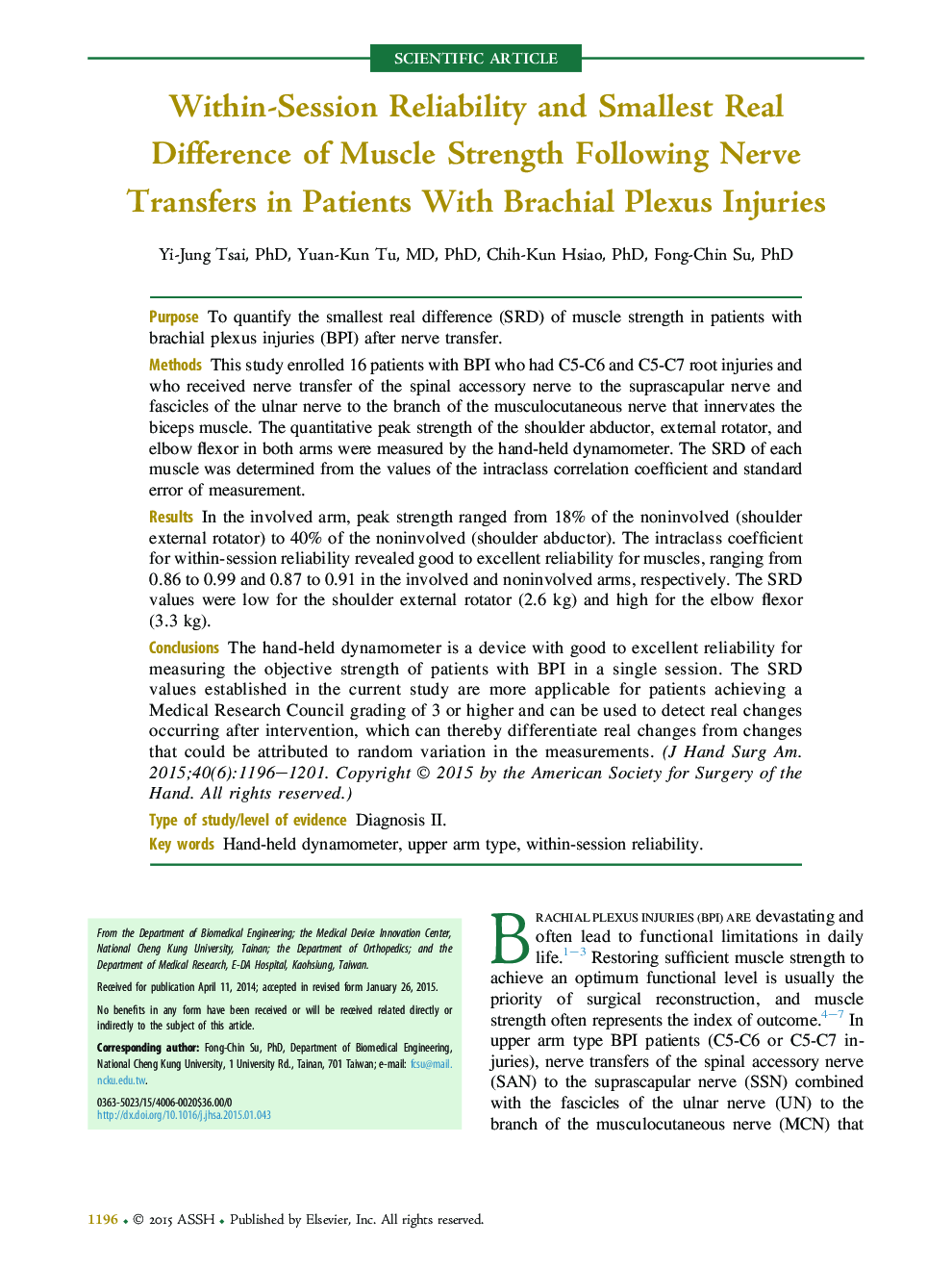| کد مقاله | کد نشریه | سال انتشار | مقاله انگلیسی | نسخه تمام متن |
|---|---|---|---|---|
| 4066729 | 1604356 | 2015 | 6 صفحه PDF | دانلود رایگان |
PurposeTo quantify the smallest real difference (SRD) of muscle strength in patients with brachial plexus injuries (BPI) after nerve transfer.MethodsThis study enrolled 16 patients with BPI who had C5-C6 and C5-C7 root injuries and who received nerve transfer of the spinal accessory nerve to the suprascapular nerve and fascicles of the ulnar nerve to the branch of the musculocutaneous nerve that innervates the biceps muscle. The quantitative peak strength of the shoulder abductor, external rotator, and elbow flexor in both arms were measured by the hand-held dynamometer. The SRD of each muscle was determined from the values of the intraclass correlation coefficient and standard error of measurement.ResultsIn the involved arm, peak strength ranged from 18% of the noninvolved (shoulder external rotator) to 40% of the noninvolved (shoulder abductor). The intraclass coefficient for within-session reliability revealed good to excellent reliability for muscles, ranging from 0.86 to 0.99 and 0.87 to 0.91 in the involved and noninvolved arms, respectively. The SRD values were low for the shoulder external rotator (2.6 kg) and high for the elbow flexor (3.3 kg).ConclusionsThe hand-held dynamometer is a device with good to excellent reliability for measuring the objective strength of patients with BPI in a single session. The SRD values established in the current study are more applicable for patients achieving a Medical Research Council grading of 3 or higher and can be used to detect real changes occurring after intervention, which can thereby differentiate real changes from changes that could be attributed to random variation in the measurements.Type of study/level of evidenceDiagnosis II.
Journal: The Journal of Hand Surgery - Volume 40, Issue 6, June 2015, Pages 1196–1201
